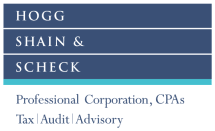Understanding the Impact of Accounting Standards for NPO in the Private Sector
Not-for-Profit Accounting Standards Overview
The Accounting Standards Board (AcSB) of the Canadian Institute of Chartered Accountants (CICA) published Accounting Standards for NPO in the private sector. These new standards are incorporated into Part III of the CICA Handbook and will be effective for fiscal years beginning or after January 1, 2012. NPOs also have the option to apply International Financial Reporting Standards (IFRS) (Part I of the CICA Handbook).
Changes to NPO accounting standards
Part III was developed based on the 4400 series of Part V of the CICA Handbook which addresses the specific needs of NPOs. Therefore this series under Part III remains fairly unchanged. For areas that are not addressed in Part III, NPOs are directed to apply the standards in Part II Accounting standards for private enterprises (ASPE) to the extent that the topics are applicable to the entity.
| Topic | The pre-change over accounting standards – Part V | Accounting Standards for Not-For-Profit (ASNPO) – Part III |
| Financial Instruments | Organizations are required to classify financial instruments into one of four categories, and this classification determines the subsequent measurement. Investments are typically carried at fair value, with immediate recognition of any changes in fair value, either in the Statement of Operations or in the Statement of Net Assets. | Financial assets and liabilities are measured at amortized cost (except derivatives, equities quoted in active markets, and indexed liabilities, which is measured at fair value). The disappearance of the “available for sale” option means that NPOs will no longer have the option to recognize unrealized gains and losses in the statement of changes in net assets/fund balances. All changes in the fair value of the financial instruments will be recognized in the statement of operations. Transaction costs incurred to acquire or issue financial instruments measured at amortized cost will be required to be netted against the carrying value, rather than being expensed.
An impairment loss is measured based on the following calculation: Current carrying amount of the asset – (highest amount the entity expects to collect through the present value of future cash flows + the sale of the financial asset on the balance sheet date and collection of collateral) The new standard will be less onerous and will require less disclosure. |
| Employee future benefits | NPO shall account for its defined benefit plans using the deferral and amortization approach with the corridor method, or any other systematic method that recognizes gains and losses faster than the corridor method. | NPO may account for its defined benefit plans using the immediate recognition approach; or the deferral and amortization approach with the corridor method or any other systematic method that recognizes gains and losses faster than the corridor method. |
| Intangible assets | Currently, Section 3064, Goodwill and Intangible Assets, provides a scope exclusion for NPOs. Given the minimal guidance in CICA 4430 on intangibles, some NPOs may use this guidance when assessing whether certain items should be capitalized. Following Section 3064 would tend to limit an NPO’s ability to capitalize items such as advertising and fund raising costs. | NPOs will follow Section 3064 in Part II which does not exclude NPOs from its scope. Development costs, selling, advertising, administration and other overhead expenditures related to series of live performances, exhibitions or fund raising efforts will be subject to the guidance in Section 3064. |
| Disclosure of government remittances | Not required. | NPOs are required to disclose the amount payable at the end of the period in respect of government remittances such payroll taxes, health taxes, and sales taxes. |
| Asset retirement obligations (AROs) | AROs are currently measured at fair value. | AROs will be measured at the best estimate of the amount required to settle the obligation at each balance sheet date. This estimate would be based on management’s experience and judgment, considering probabilities of possible outcomes and the time value of money. |
Optional Elections
Fair value
- Can elect to measure capital assets at fair value on date of transition and use that as deemed cost going forward.
Employee future benefits
- Any entity with a defined benefit pension plan can elect to immediately recognize unamortized actuarial gains and losses and past service costs immediately through retained earnings on the opening balance sheet date with an offsetting adjustment to the recorded pension asset or liability.
Financial instruments
- NPO that applies Section 3856 in Part II in its opening statement of financial position for the first year of adoption of ASNPO. Any difference between the recognition and measurement of financial instruments at that date, and the prior year’s closing statement of financial position is recorded as an adjustment to opening net assets at the date of transition.
- At the date of transition, an organization is permitted to designate any financial asset or financial liability to be measured at fair value in accordance with Paragraph 3856.13(a) in Part II of the Handbook.
- This election might be desirable when an NPO has a mix of portfolio investments where some investments are subsequently measured at their fair value (e.g. shares in a public company) and others that, in absence of taking advantage of the election, would be subsequently measured at amortized cost (e.g. corporate bonds).
Asset retirement obligations
- NPO that has not previously recognized ARO on a basis consistent with Section 3110 in Part II, may measure the obligation at the date of transition to ASNPO and estimate the amount that shall be included in the carrying amount of the related asset based on the original and remaining life of the asset.
- The difference between the change in the obligation and the change to the carrying amount of the asset is charged to opening net assets at the date of transition.
Cumulative translation differences
- Election to reduce to zero at the date of transition the cumulative translation
- If an NPO elects to use the exemption, any gain or loss on the subsequent disposal of a foreign operation will only include the cumulative translation differences subsequent to the date of transition.
Business combinations
- Can elect to not apply business combinations (Section 1582) before transition date.
- This means that business combinations previously accounted for as pooling of interests, reverse acquisitions or as acquisitions do not have to be reassessed under the revised business combinations standards to determine if they would have been characterized differently under the new standards.
Transition Rules and Disclosure
First-time adoption of Part III of the Handbook is mandatory for annual financial statements relating to fiscal years beginning on or after January 1, 2012. Adoption of this part for earlier fiscal years is allowed. Part III must be adopted on a retrospective basis which will require comparative financial information for 2011 in the form of a note disclosure.
The NPO will prepare and present the opening statement of financial position at the date of transition to Part III.
The accounting policies that the NPO uses in its opening statement of financial position prepared in accordance with Part III may differ from those that it used for the same date under its previous accounting policies (i.e. Part V). Any resulting changes that will occur between the two policies, the NPO will recognize these adjustments directly in net assets at the date of transition to Part III.
Reconciliation to previously reported amounts for:
- Opening net assets or fund balance
- Excess of revenue over expenses comparative year
- Material adjustments to cash flows
Hogg, Shain & Scheck specializes in accounting for not-for-profit organizations and charities in Ontario. Contact us today at 647-557-7591 to learn more about our specialized NPO accounting services.






